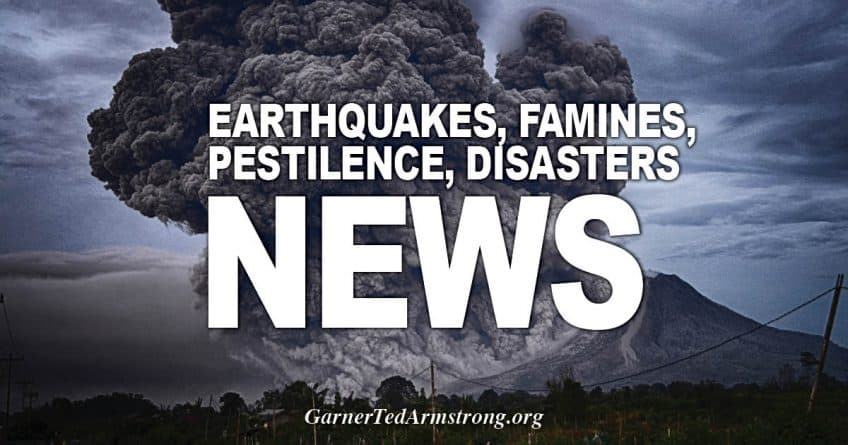The past 22 years rank as the driest period since at least 800 A.D.
The extreme heat and dry conditions of the past few years pushed what was already an epic, decades-long drought in the American West into a historic disaster that bears the unmistakable fingerprints of climate change. The long-running drought, which has persisted since 2000, can now be considered the driest 22-year period of the past 1,200 years, according to a study published Monday in the journal Nature Climate Change.
Previous work by some of the same authors of the new study had identified the period of 2000 through 2018 as the second-worst megadrought since the year 800 — exceeded only by an especially severe and prolonged drought in the 1500s. But with the past three scorching years added to the picture, the Southwest’s megadrought stands out in the record as the “worst” or driest in more than a millennium.
“Without climate change, this would not be even close to as bad as one of those historical megadroughts,” said Park Williams, a climate scientist at the University of California at Los Angeles. “The thing that is really remarkable about this drought period is that temperatures have been warmer than average in all of the years but one.”
The double whammy of searing heat and persistent drought in recent years reflects the steady increase in global temperatures brought on by the burning of fossil fuels. The authors attribute 19 percent of the severe 2021 drought, and 42 percent of the extended drought since the 21st century began, to human-caused climate change.
This giant climate hot spot is robbing the West of its water
Scientists refer to this combined hot and dry effect as “aridity” — a warm and thirsty atmosphere that can pull moisture from soil and plants, melt snow, and intensify heat waves.
“All of the climate models agree that when greenhouse gases go into the atmosphere and temperatures rise, that’s going to enhance the ability of the atmosphere to pull water out of ecosystems,” Williams said.
This “background drying” brought on by a warmer atmosphere can dwarf occasional wet or cool periods. For example, the Southwest’s 2021 drought maintained its grip despite robust monsoon rains and record summer precipitation in some areas, in part because of extraordinary heat waves early last summer, and generally above-average temperatures.
The study’s tree-ring record also provides a sobering view of what is possible in the West. “The tree rings tell us that there can actually be very, very extreme dryness in the West without the help of climate change at all,” Williams said. “Even without climate change, we can have monumentally severe and long-lasting droughts.”
The study finds that the 21st century has been substantially drier than the previous five decades, with 8.3 percent less precipitation, and nearly 1 degree Celsius (1.8 Fahrenheit) warmer than the period from 1950 to 1999.
The American West’s drought isn’t a disaster. It’s our new, permanently arid normal.
And scientists have made clear that future warming could bring even more crippling and frequent droughts. Last summer, a report by the U.N. Intergovernmental Panel on Climate Change found that even as global warming can bring more extreme rainfall and flooding in some areas, it can also fuel more intense drought in many regions.
That analysis found that at the current warming trajectory, droughts in drying regions that previously occurred only once every 10 years are now happening about 1.7 times per decade, on average. If the Earth warms 2 degrees Celsius, scientists expect those once-rare events to take place roughly 2½ times per decade, on average.
But the West’s most recent megadrought isn’t just written in scientific data. It has manifested in the shrinking water levels of Lake Mead and Lake Powell, which last summer reached their lowest on record. These reservoirs have declined during the 21st century with rising temperatures, despite intermittent wet years.
The intensifying drought looks to continue in 2022 — unless a miraculous spring season brings a return of the storm track and moisture-rich atmospheric rivers.
Fueled by climate change, costly Southwest drought isn’t going away
While the study covers only the period through 2021, drought conditions have taken a turn for the worse in 2022. After a promising start to the wet season in December, unusually dry conditions have persisted over much of California since January.
California’s snowpack declined to just 73 percent of normal as of Monday, after being at 160 percent of normal in December.
The Central Sierra Snow Lab run by the University of California at Berkeley tweeted that its snowpack lost 5 percent of its water content amid unusually warm weather over the past week. At its monitoring site, the snowiest December on record has been followed by a record streak of 37 days without precipitation.
The parched conditions laid the groundwork for a recent record-setting winter heat wave in California.
From Wednesday through Sunday, the National Weather Service in Los Angeles issued the first heat advisory on record during the winter months in Southern California. Scores of record high temperatures were set, from San Diego to San Francisco.
Brush fires raged in Southern California amid record heat, worsening drought
Death Valley soared to 94 degrees on Feb. 11, its highest temperature recorded so early in the season.
The hot, dry weather, combined with gusty winds, fueled several brush fires in Southern California late last week. California has seen more than 12 million acres burn in the past decade, and 18 of the top 20 largest wildfires in state history have occurred in the past two decades.
Forecasters at the National Weather Service predict drought conditions to persist through the spring.
The authors of the paper also see no end in sight to the West’s arid reality.
“This drought will very likely persist through 2022,” they wrote, “matching the duration of the late-1500s megadrought.”
Williams said that tree-ring records do provide some reason for hope — megadroughts do eventually end when the rains return. Those rains are arriving in increasingly intense bursts as the atmosphere warms.
“The way you get out of droughts in the West is probably changing,” he said. Droughts may end abruptly during extremely wet years, like 2017, but then quickly reverse course again into another multiyear dry spell.
Brady Dennis and Jason Samenow contributed to this report.
Source: https://www.washingtonpost.com/weather/2022/02/14/southwest-megadrought-worst-1200-years/
[Disclaimer]









